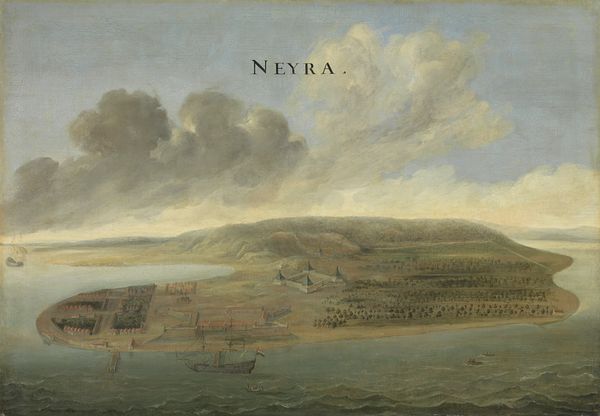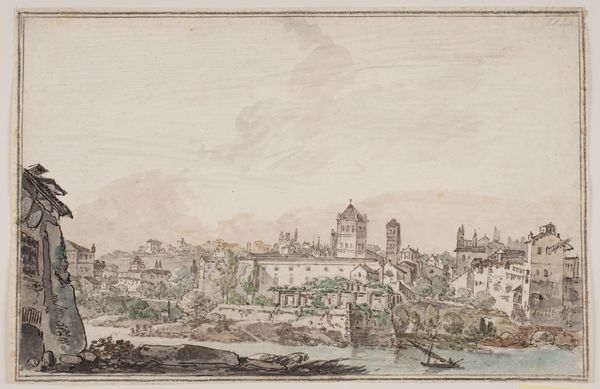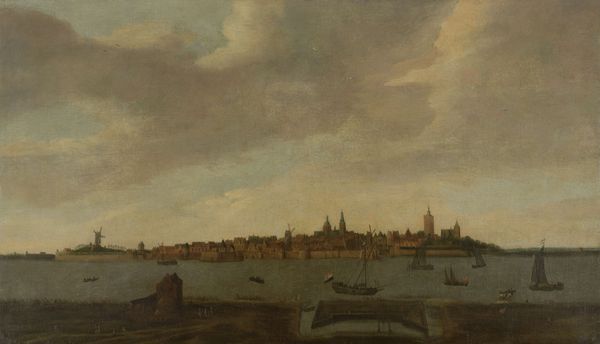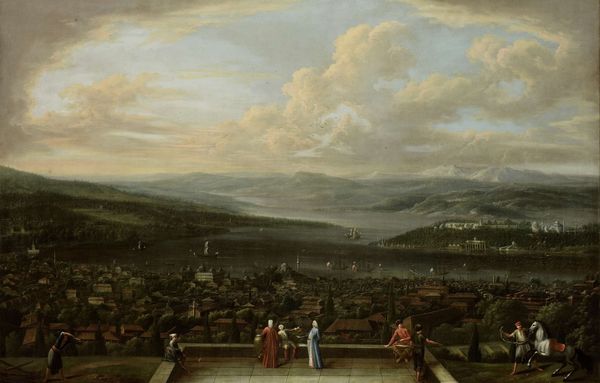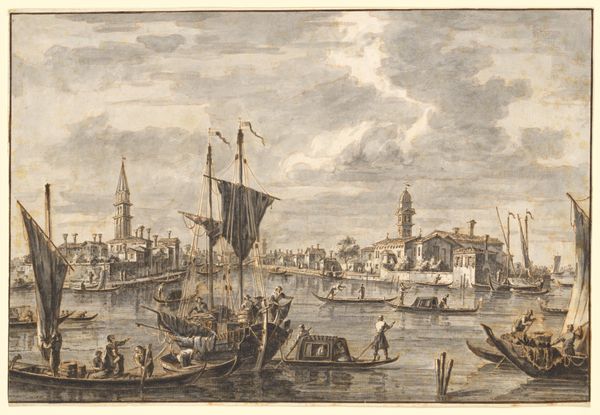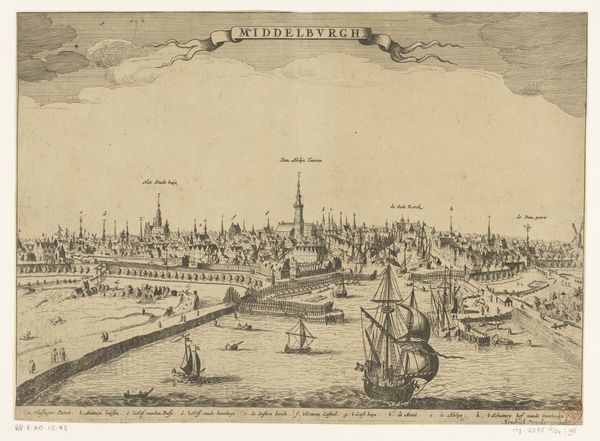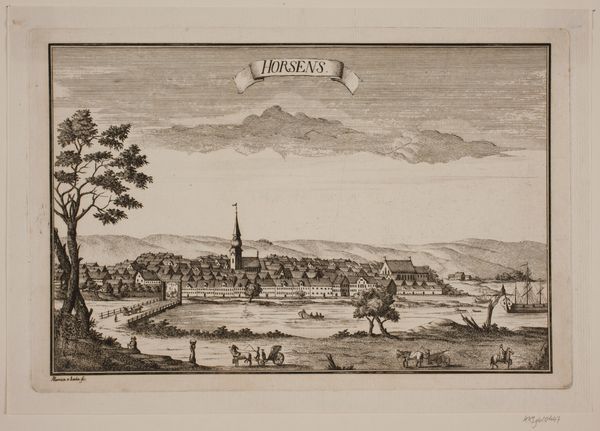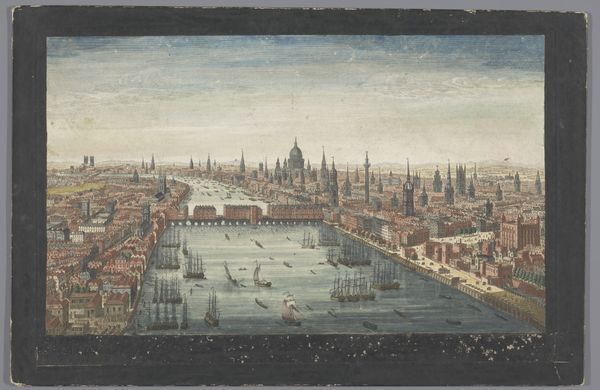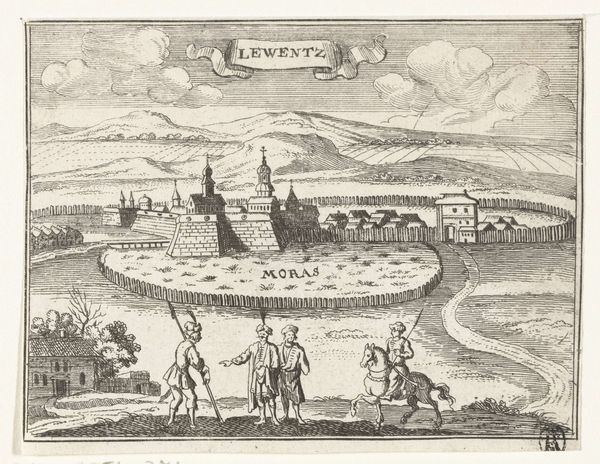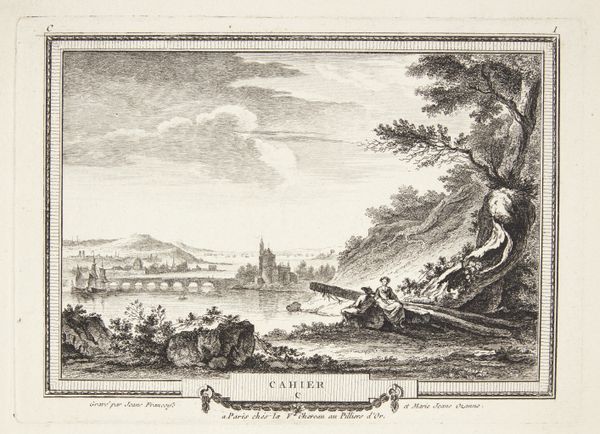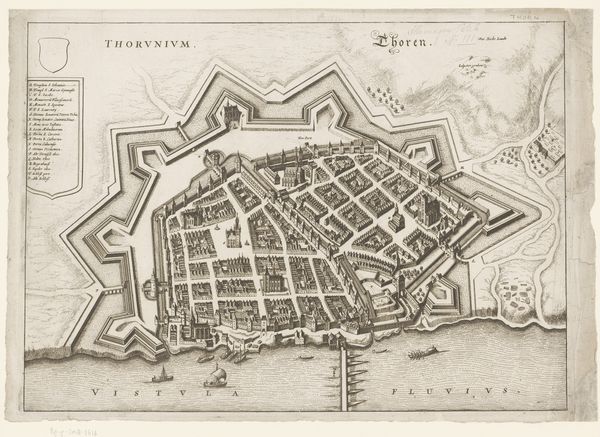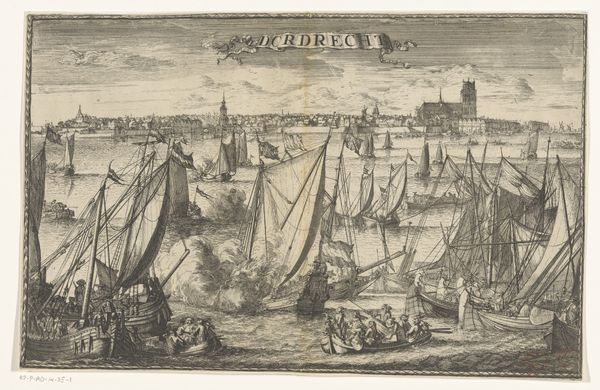
painting, oil-paint
water colours
baroque
dutch-golden-age
painting
oil-paint
landscape
perspective
oil painting
cityscape
watercolor
Dimensions height 97 cm, width 140 cm
Johannes Vinckboons painted this view of Judea, the capital of Siam, using oil on canvas sometime in the 17th century. But, of course, Judea is in the Middle East, not Southeast Asia. How could Vinckboons, who never traveled to Siam, get it so wrong? In the 17th century, the Dutch East India Company was eager to establish trade routes with Siam. They would have commissioned artists like Vinckboons to make images of the country. These images were less about representing the real Siam than about sparking the imaginations of investors and the general public. Judea may have been used as a familiar, Biblical reference point for a foreign city. The painting is not so much a factual depiction as an exercise in the politics of imagery. To understand images like this, historians consult not only the artwork itself but also maps, travelogues, company records, and other historical documents. Only then can we truly understand the complex ways in which art is shaped by social and institutional contexts.
Comments
In 1608, the Dutch East India Company opened an office to conduct trade in dyewood, tin and animal skins in Judea (Ayutthaya), the capital of the Kingdom of Siam (now Thailand). From that post, the Dutch also maintained contact with the Siamese royal court. Already in 1609, the king sent a delegation to the Dutch Republic to strengthen diplomatic relations. The company was ultimately granted permission to build its own shipyard in Judea.
Join the conversation
Join millions of artists and users on Artera today and experience the ultimate creative platform.


